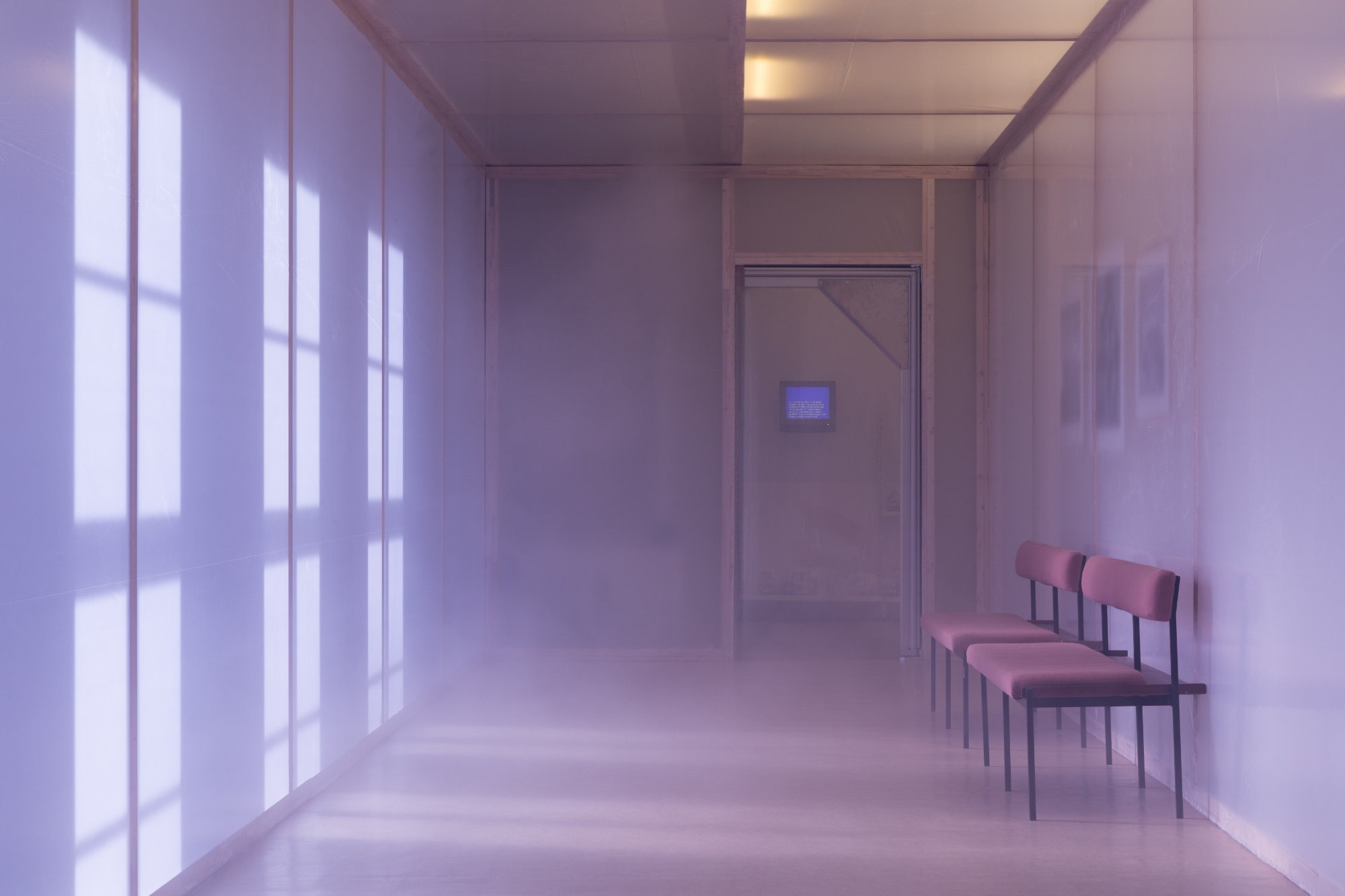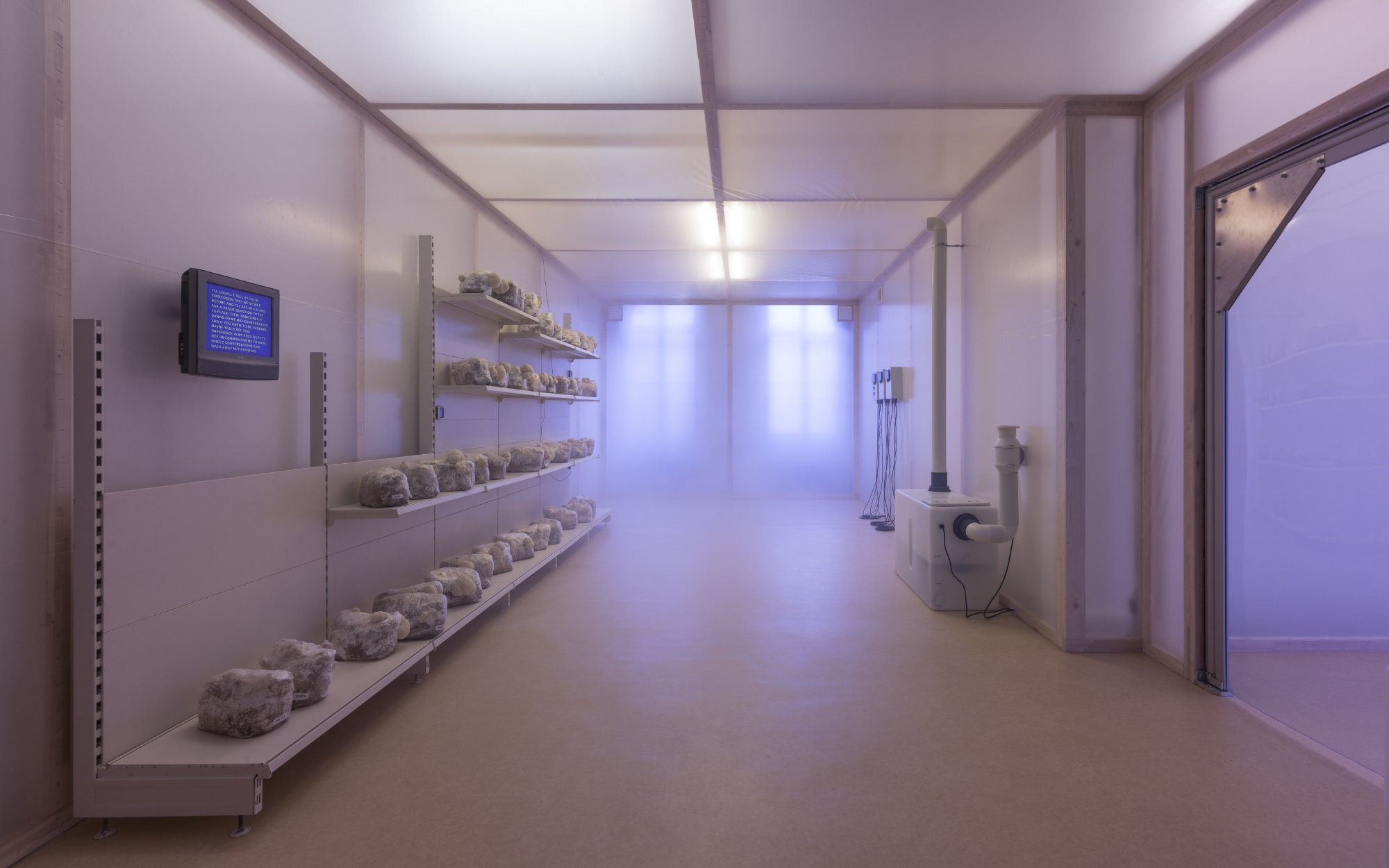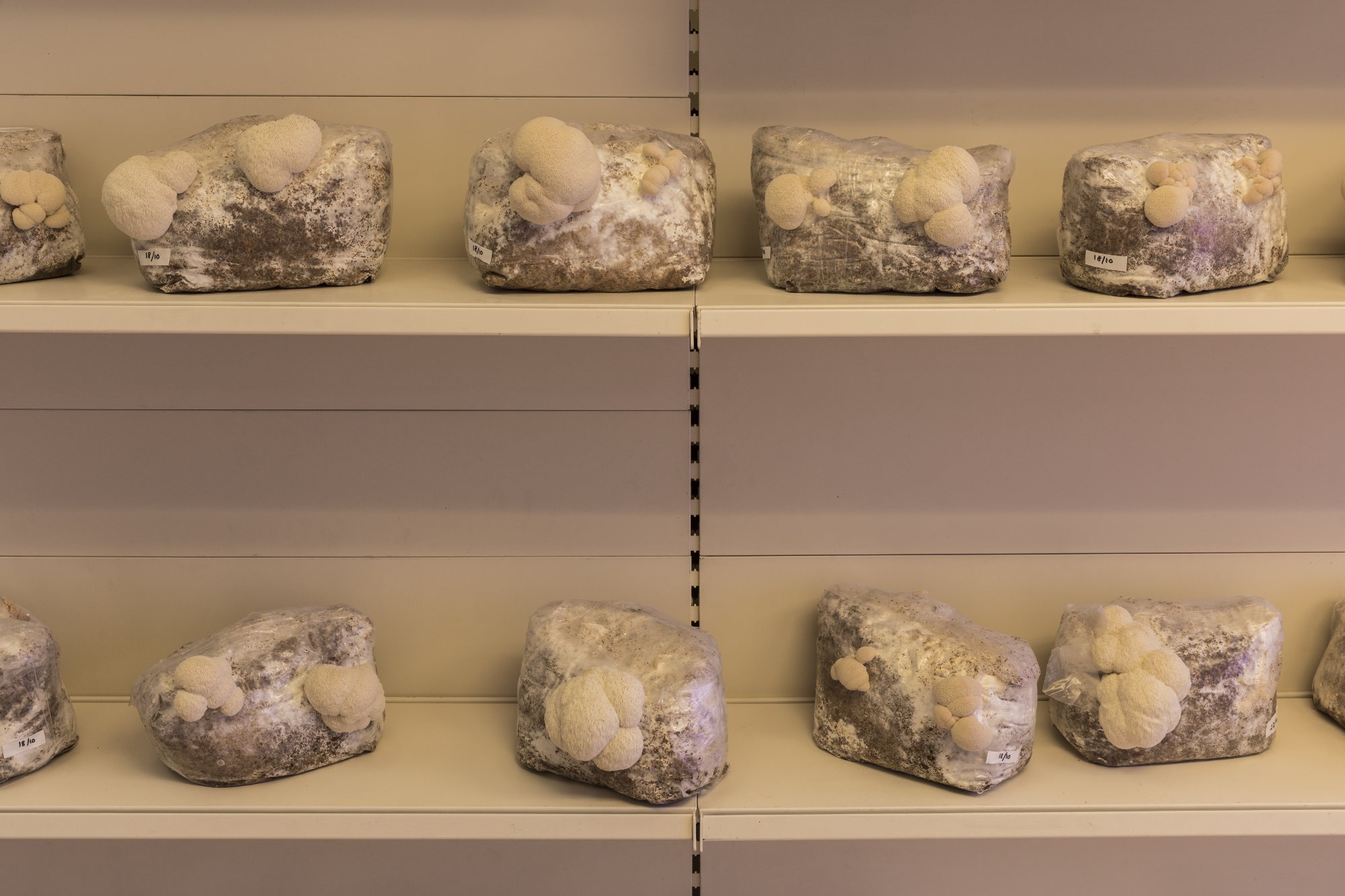Steve Bishop
Deliquescing
03 Nov 2018 - 06 Jan 2019

Steve Bishop, Installation view of the exhibition Deliquescing, Installation in five parts, KW Institute for Contemporary Art, Berlin, 2018, Courtesy the artist and Carlos/Ishikawa, London, Photo: Frank Sperling

Steve Bishop, Installation view of the exhibition Deliquescing, Installation in five parts, KW Institute for Contemporary Art, Berlin, 2018, Courtesy the artist and Carlos/Ishikawa, London, Photo: Frank Sperling

Steve Bishop, Installation view of the exhibition Deliquescing, Installation in five parts, KW Institute for Contemporary Art, Berlin, 2018, Courtesy the artist and Carlos/Ishikawa, London, Photo: Frank Sperling

Steve Bishop, Installation view of the exhibition Deliquescing, Installation in five parts, KW Institute for Contemporary Art, Berlin, 2018, Courtesy the artist and Carlos/Ishikawa, London, Photo: Frank Sperling

Steve Bishop, Installation view of the exhibition Deliquescing, Installation in five parts, KW Institute for Contemporary Art, Berlin, 2018, Courtesy the artist and Carlos/Ishikawa, London, Photo: Frank Sperling

Steve Bishop, Installation view of the exhibition Deliquescing, Installation in five parts, KW Institute for Contemporary Art, Berlin, 2018, Courtesy the artist and Carlos/Ishikawa, London, Photo: Frank Sperling
Steve Bishop
Deliquescing
3 November 18 – 6 January 19
In his practice, London-based artist Steve Bishop focuses on creating complex, surreal spatial environments that conjure subtle emotional states through the evocation of abstract, biographically informed, dream-like parallel worlds. His objects, films, and sculptures address questions of remembrance and how architectural spaces can reflect interior states.
For his exhibition Deliquescing at KW, Bishop builds upon a body of research that focuses specifically on the fragility of memory and the potential for its preservation, defying the gradual breakdown of matter through the effects of time. The exhibition is based on two distinct but interrelated pillars: one of which is a deserted town in northern Canada that was built in 1981 to house the workers of a nearby mine and then abandoned in 1983. Its remarkably intact state is due to the constant struggle to prevent the surrounding forest from reclaiming the town and is a testament to the live-in caretaker, who ensures that the lawns are mowed and the buildings are heated. The other point of departure is the unique restorative qualities of the lion’s mane mushroom: an edible, bulbous-looking mushroom native to the forests of North America, Europe and Asia that has shown a remarkable ability to stimulate the synthesis of nerve growth factor in the brain. Lion’s mane is sold as a dietary supplement for memory enhancement and is being researched as a potential medicine for the treatment of Alzheimer’s disease.
A large structural frame covered in a semi-opaque polyethylene tarp retains the specific air conditions needed for growing the mushrooms within the exhibition space. The tarp is both a practical element and a conceptual membrane, setting apart the two realms that frame the exhibition; the world where the mushrooms grow and that of the town. Paintings reproduced from the town are displayed behind the tarp, suggesting a fuzziness or out-of-reach quality. In the context of the exhibition, the preservation of the town, the uses of the mushroom, and the growing of the mushrooms in the gallery are brought together as interrelated symbols of “caretaking” and “maintenance,” summoning a feeling of something suspended in the oblique feeling of half-remembering. The work displays a certain sense of aliveness, a charge that highlights a vulnerability in the process of continual growing and in turn deliquescing in a cyclical progression. Bishop strikes a delicate balance between a social blankness and a familiar—if not personal—specificity that both stimulate sensations of a shared consciousness.
The exhibition is accompanied by a publication that continues the underlying research and allows for a broader view of Bishop’s work. An interview with Anna Gritz and essays by Orit Gat, Gary Zhexi Zhang and Anna Tsing provide theoretical perspectives on the subjects of his research and contextually frame the larger objectives of the exhibition.
Curator: Anna Gritz
Assistant curator: Maurin Dietrich
Deliquescing
3 November 18 – 6 January 19
In his practice, London-based artist Steve Bishop focuses on creating complex, surreal spatial environments that conjure subtle emotional states through the evocation of abstract, biographically informed, dream-like parallel worlds. His objects, films, and sculptures address questions of remembrance and how architectural spaces can reflect interior states.
For his exhibition Deliquescing at KW, Bishop builds upon a body of research that focuses specifically on the fragility of memory and the potential for its preservation, defying the gradual breakdown of matter through the effects of time. The exhibition is based on two distinct but interrelated pillars: one of which is a deserted town in northern Canada that was built in 1981 to house the workers of a nearby mine and then abandoned in 1983. Its remarkably intact state is due to the constant struggle to prevent the surrounding forest from reclaiming the town and is a testament to the live-in caretaker, who ensures that the lawns are mowed and the buildings are heated. The other point of departure is the unique restorative qualities of the lion’s mane mushroom: an edible, bulbous-looking mushroom native to the forests of North America, Europe and Asia that has shown a remarkable ability to stimulate the synthesis of nerve growth factor in the brain. Lion’s mane is sold as a dietary supplement for memory enhancement and is being researched as a potential medicine for the treatment of Alzheimer’s disease.
A large structural frame covered in a semi-opaque polyethylene tarp retains the specific air conditions needed for growing the mushrooms within the exhibition space. The tarp is both a practical element and a conceptual membrane, setting apart the two realms that frame the exhibition; the world where the mushrooms grow and that of the town. Paintings reproduced from the town are displayed behind the tarp, suggesting a fuzziness or out-of-reach quality. In the context of the exhibition, the preservation of the town, the uses of the mushroom, and the growing of the mushrooms in the gallery are brought together as interrelated symbols of “caretaking” and “maintenance,” summoning a feeling of something suspended in the oblique feeling of half-remembering. The work displays a certain sense of aliveness, a charge that highlights a vulnerability in the process of continual growing and in turn deliquescing in a cyclical progression. Bishop strikes a delicate balance between a social blankness and a familiar—if not personal—specificity that both stimulate sensations of a shared consciousness.
The exhibition is accompanied by a publication that continues the underlying research and allows for a broader view of Bishop’s work. An interview with Anna Gritz and essays by Orit Gat, Gary Zhexi Zhang and Anna Tsing provide theoretical perspectives on the subjects of his research and contextually frame the larger objectives of the exhibition.
Curator: Anna Gritz
Assistant curator: Maurin Dietrich
